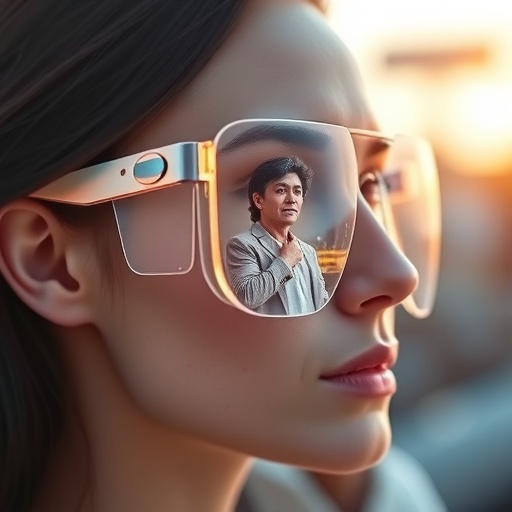Panoramic visual-inertial odometry (VIO) systems have become indispensable tools for navigating environments where traditional Global Positioning System (GPS) signals fail. However, the effectiveness of these systems can be significantly compromised by geometric distortions arising from conventional projection models in panoramic imaging. In a pivotal advancement, researchers have introduced Geotri-VIO, a novel approach that leverages a unique multi-prism projection method centered around triangular prisms, ensuring that geometric consistency is preserved across panoramic images. This innovative methodology is set to revolutionize the way VIO systems capture and interpret visual data in real-world applications.
Central to the challenges faced by panoramic imaging is the trade-off between wide-angle views and the accuracy of spatial representations. Historically, projection models such as equidistant cylindrical or cube mapping have been the standard. Yet, these traditional models frequently fail to maintain the correct spatial relationships between features in the panoramic view, leading to significant errors in feature detection and motion estimation. For systems reliant on visual-inertial odometry, like those found in autonomous vehicles or robotic applications, such distortions can severely hinder performance, making accurate navigation in complex environments an arduous task.
In a groundbreaking study published in the esteemed journal Satellite Navigation, a team from Sun Yat-sen University laid the groundwork for this transformative technology. Their research highlights Geotri-VIO as a state-of-the-art framework that addresses the shortcomings of previous projection models. By innovatively rethinking the geometry of panoramic imaging, the researchers have engineered a system wherein the image planes are constructed as tangent triangular prisms surrounding the panoramic camera’s spherical field. This clever design not only achieves a remarkable level of spatial accuracy but also facilitates superior feature tracking capabilities.
.adsslot_aZ3fubjzKR{width:728px !important;height:90px !important;}
@media(max-width:1199px){ .adsslot_aZ3fubjzKR{width:468px !important;height:60px !important;}
}
@media(max-width:767px){ .adsslot_aZ3fubjzKR{width:320px !important;height:50px !important;}
}
ADVERTISEMENT
The advantages of this multi-prism projection approach were rigorously validated through extensive testing against both benchmark and real-world datasets. The results were striking, demonstrating consistent outperformance of Geotri-VIO compared to existing frameworks, such as LF-VIO and VINS-Mono. This leads to a significant breakthrough in wide-angle visual localization, ensuring that systems built around Geotri-VIO can navigate successfully through even the most challenging and dynamic environments.
One of the standout features of Geotri-VIO lies in its mathematical foundations. By utilizing a triangular prism projection model, the researchers were able to tangentially align image planes with the panoramic camera’s spherical projection. This novel configuration mitigates the nonlinear distortions typically associated with omnidirectional projections, leading to a significant enhancement in the preservation of spatial relationships between pixels. Extensive evaluations showcased that this pioneering design delivered unparalleled improvements in both local and global geometric consistency.
Moreover, the experimental data supporting Geotri-VIO’s efficacy are compelling. This innovative framework exhibited superior performance in point and line feature extraction, which are fundamental components for accurate pose estimation. In trials conducted on both the indoor PALVIO dataset and outdoor sequences, Geotri-VIO achieved up to a 39% reduction in Absolute Trajectory Error, coupled with a notable boost in robustness in dynamic conditions characterized by significant environmental change or movement.
Geotri-VIO is not merely an improvement over its predecessors; it represents a deeply versatile platform designed to integrate various tracking methodologies seamlessly. This includes compatibility with both point-based and point-line tracking systems, making it ideally suited to a broad array of applications across different fields, including robotics, and autonomous driving. Furthermore, its efficient operation incurs minimal computational overhead, enabling real-time performance, even when deployed within the constraints of mobile robotics.
“The principle guiding our innovation was to recast the interpretation of panoramic images by prioritizing geometry rather than altering it,” remarked Dr. Hui Cheng, the corresponding author of the study. “By employing a triangular prism projection, we have managed to restore the spatial fidelity that has often been lost in conventional models. This restoration enables systems utilizing Geotri-VIO to navigate with enhanced precision, even in complex or unpredictable scenarios.”
The implications of Geotri-VIO stretch far beyond mere technical advancements. This robust and distortion-free vision system holds transformative potential across a multitude of industries. In fields such as robotics and autonomous navigation, it offers a highly reliable localization solution for use in urban, indoor, or GPS-blocked areas. For applications in augmented and virtual reality, the enhanced spatial consistency fostered through Geotri-VIO ensures a more stable and immersive experience for users. Additionally, the adaptable nature of the framework allows it to scale effectively across different platforms and tasks.
As the demand for advanced panoramic imaging continues to rise, so too does the relevance of Geotri-VIO’s groundbreaking contributions. The researchers’ commitment to refining projection models with an emphasis on spatial integrity cannot be overstated. The integration of such an innovative system into existing technologies will undoubtedly set a new standard for vision-based localization in a myriad of applications, ensuring that users can navigate with greater accuracy and confidence than ever before.
In conclusion, Geotri-VIO presents an exciting new chapter in the evolution of panoramic visual-inertial odometry systems. Its combination of rigorous scientific methodology, innovative design, and practical applications positions it as a frontrunner in the quest for enhanced localization technology. As researchers continue to explore the full potential of this system, the vision for a future defined by more accurate and reliable navigation in challenging environments comes ever closer to realization. As the foundation of the next generation of visual technology, Geotri-VIO is poised to profoundly impact how we interact with our surroundings in a constantly evolving technological landscape.
Subject of Research:
Article Title:
News Publication Date:
Web References:
References:
Image Credits:
Keywords
Tags: advancements in odometry systemsautonomous vehicle navigation challengesfeature detection errorsgeometric distortions in imagingGPS alternatives for navigationmulti-prism projection methodpanoramic visual-inertial odometryrobotic applications of VIOSatellite Navigation journal researchspatial representations accuracytriangular prisms in navigationvisual data interpretation in VIO





